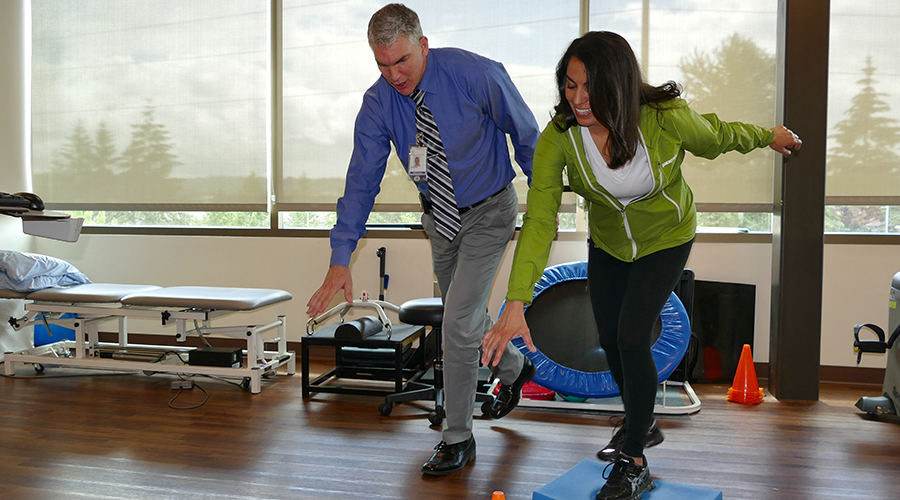Falls Prevention
Host a Falls Prevention Screening
You can host a falls risk screening and assessment in your community during National Physical Therapy Month — or anytime throughout the year. Learn how to host a screening with resources from APTA Geriatrics and CDC's STEADI program — Stopping Elderly Accidents, Deaths & Injuries.
Why Screen?
Physical therapists are movement experts and uniquely qualified to be at the front lines of falls prevention in people of all ages and abilities. Older adults are most at risk for falling, and falls can be dangerous.
However, falls don't have to be inevitable and can be prevented. You can use a fall risk assessment to identify risk factors for falling and make recommendations to your patients or people in your community.

To host a screening you’ll want to consider planning and staffing. For tips on how to plan an assessment, please reference this resource document developed by the APTA Geriatrics Academy, Balance and Falls SIG. (Link to PDF).
How to Conduct a Falls Risk Assessment
Here are instructions for the five-step assessment format. The assessment should take about 15-20 minutes to complete.
- Screen.
Use the 12-question checklist from the CDC's "Stay Independent" brochure. - The participant will take this with them.
• Any volunteer can perform this step.
2. Assess.
Fill out the CDC’s Fall Risk Factors Checklist throughout the assessment.
• Only a PT or other health care provider performs this step.
• Take vital signs while client is seated. They include:
o Blood pressure.
o Pulse rate.
o Respiration rate.
o Blood oxygen.
o Temperature.
• The participant will take this with them.
3. Perform.
• Only a PT or other health care provider performs this step.
Tests (all can be found and downloaded from the CDC’s STEADI Clinical Resources)
• Timed Up & Go. Participant starts by sitting in a chair with armrests. Next, you will time them while they will get up and walk 10 feet at their usual pace and return to the chair to sit down.
• 30-Second Chair Stand Test. Participant starts by sitting in a chair with their arms crossed in front of them (so they can’t use arms for support). Next, you will time them and count while they stand up and sit down as many times as they can in 30 seconds.
• Four-Stage Balance Test. Participant starts by standing with you holding their arm as they get into position. Next, you will let go (staying ready to assist if needed) and time them as they hold four different positions for 10 seconds each. The positions increase in difficulty, with the fourth one involving standing on one foot.
Additional Screening
• Review medication(s).
• Discuss home hazards, such as throw rugs, slippery tub floor, and stairs.
• Assess participant’s footwear and note any concerns.
4. Results and Education
• Provide education on physical therapist intervention, if appropriate.
• Provide education on evidence-based exercise, if appropriate.
• Provide education on discussing these screening results with their primary care physician, if appropriate.
• Provide educational resources, if appropriate (print ahead of time). These may include the following CDC STEADI handouts (also available in Spanish):
o Feet and Footwear for Older Adults.
o Family Caregivers: Protect Your Loved Ones from Falling.
o Medications Linked to Falls.
o Check for Safety: A Home Fall Prevention Checklist for Older Adults.
o Stay Independent: Learn More about Fall Prevention.
o What You Can Do to Prevent Falls.
o Postural Hypotension: What It Is & How to Manage It.
5. Wrap-Up
• Take vital signs again before participant leaves. Make sure they have all their materials. Provide the ChoosePT falls handout (Link to “Reduce Your Risk of Falling by Taking These Simples Steps”) and make sure to let them know they can go to ChoosePT.com/FindaPT to search for a physical therapist near them.
Additional Resources
- APTA member resources on falls.
- Consumer information on falls.
- APTA Geriatrics, Balance and Falls SIG resources.
- National Council on Aging’s Falls Free Check Up tool (for patients).
Advocacy Resources
Coming soon